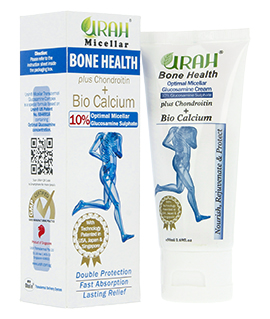
Nearly everyone has experienced knee pain. Whether it’s caused by arthritis, excessive foot pronation or overuse of the muscles that protect this vulnerable joint, our knees take a knocking. In fact, knee arthritis is the single greatest cause of chronic disability among U.S. adults age 65 and older.
Here’s the good news: Most chronic knee pain is avoidable. New research published in the New England Journal of Medicine suggests that exercise and physical therapy are just as effective as surgery for relief from chronic knee pain related to arthritis. Learning to strengthen and stretch key muscles that support the knees, and other ways to protect and take care of our knees, can ultimately prolong the health of this vital body part.
We know from research that knee injuries, including common Anterior Cruciate Ligament (ACL) tears, can occur when large hip muscles are weak. ACL tears, which are eight times more likely in women athletes, have been shown to lead to other cartilage tears and to correlate with knee arthritis later in life.
As a society, our butt muscles are weak. When the main butt muscle (gluteus maximus) is weak, it causes the pelvis to drop and the upper thigh bone (femur) to fall inward. This imbalance creates painful downward stress on the hip, knee and ankle every time you take a step.
Hip extensions are helpful exercises to strengthen the glutes.
When butt muscles atrophy or become imbalanced because we tend to sit much of the day, the hamstrings and hip adductors (inner thigh muscles) also overwork — to compensate for the underdeveloped gluteus maximus — resulting in compressive force on the knee joint. By stretching out these support muscles, you decrease the chance that they’ll get tight and cause muscle imbalances. So remember the complementary two-fold process: As you strengthen naturally weak muscles like the glutes, also stretch supporting muscles like the inner thigh muscles.
Abdominal weakness will cause your pelvis to tilt forward, creating excessive low-back curvature and shifting the leg bones inward. You can experiment with this yourself: Over-arch your back and notice how your legs and knees want to roll in toward the midline of the body. Then flatten your back and notice how the opposite movement occurs at the legs.
Strengthening the core helps to keep your back in a neutral spine position and places the lower extremities — specifically the knees — in the best possible position for movement without joint compression.
There are so many ways to strengthen your abdominal muscles besides doing crunches. ...
Being overweight makes men five times more likely (and women four times more likely) to develop knee osteoarthritis. New research shows that a 10% decrease in weight will result in a 28% increase in knee function (such as for climbing stairs and walking). Another study found that for every 11 pounds a woman loses, there is a remarkable 50 percent decrease in the risk of knee arthritis.
Why? Fat decreases muscle strength, and excess body weight adds strain to knee joints. In fact, there’s an inverse relationship between body weight and quadriceps muscle strength: the higher your body weight, the weaker your knee muscles.
To start burning those extra calories required for weight lost without adding additional impact to the knees, try water aerobics, an elliptical trainer or cycling (making sure you have proper seat height).
You may look great in three-inch stilettos, but keep in mind that high-heeled shoes increase the compressive force on your knee joints by 23%. Wearing heels also encourages tight calf muscles, another common cause of knee pain. A tight calf can pull the foot inward to a position called pronation, which essentially collapses the arch of the foot and causes the lower leg to roll inward, placing stress on the ankle and knee.
So embrace the flat shoe fashion trend and stretch out those calves. On the flip side, replace your workout sneakers frequently — every 300 miles, which could be three months or a year depending on your level of activity. This is a safe way to avoid wearing a shoe with poor cushioning support for your arches and joints.
Source: http://life.gaiam.com/article/best-ways-ease-knee-pain-5-tips-physical-therapist
Click here to Check How to Use Urah Products
Click here to Check the Quality of your Glucosamine Product before use

2025 © URAH Transdermal Pte Ltd. ALL Rights Reserved. Urah Privacy Policy | Terms of Service | Return Policy
Disclaimer: All contents on this website are provided for general information only, and should not be treated as a substitute for the medical advice of your Physician or any other health care professional. Urah is not responsible or liable for any diagnosis made by any user based on the content of this website. Always consult your own Physician if you're in any way concerned about your health. Urah Micellar Transdermal Cream formulae are not patented or under any patent rights.
No comment yet